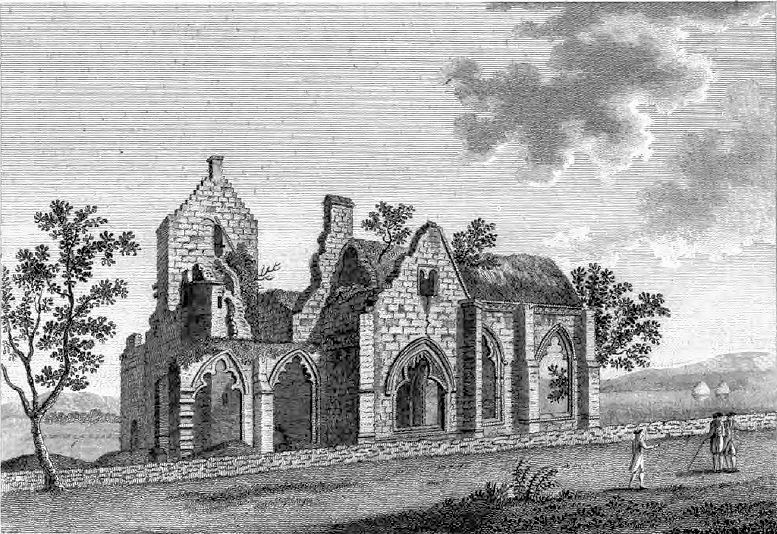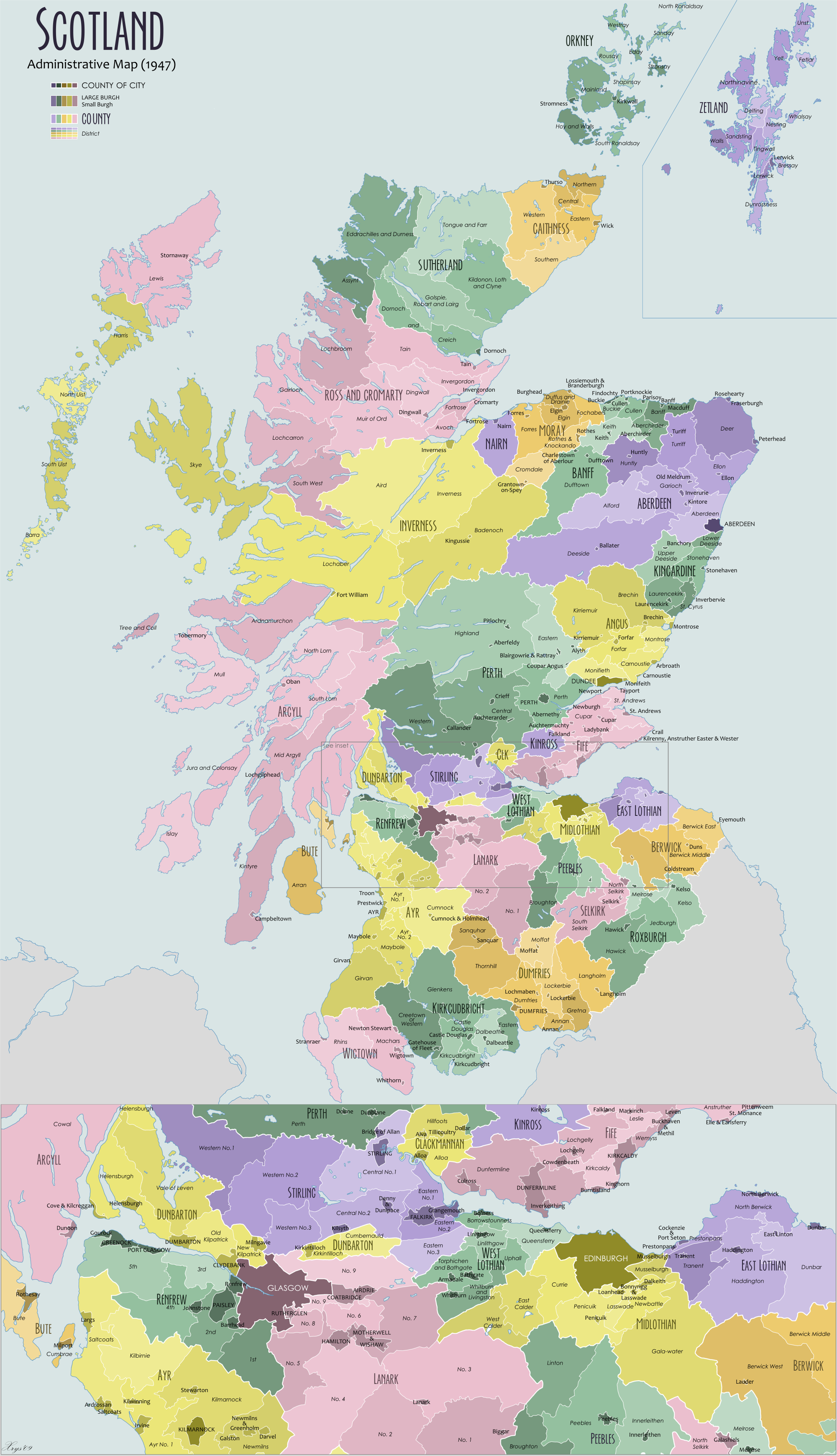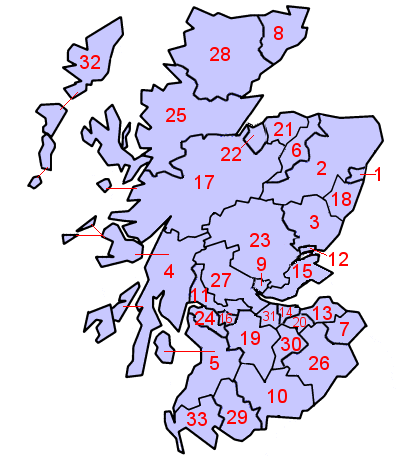|
Dumfriesshire
Dumfriesshire or the County of Dumfries or Shire of Dumfries () is a Counties of Scotland, historic county and registration county in southern Scotland. The Dumfries lieutenancy areas of Scotland, lieutenancy area covers a similar area to the historic county. In terms of historic counties it borders Kirkcudbrightshire to the west, Ayrshire to the north-west, Lanarkshire, Peeblesshire and Selkirkshire to the north, and Roxburghshire to the east. To the south is the coast of the Solway Firth, and on the other side of the border between Scotland and England the England, English county of Cumberland. Dumfriesshire has three traditional subdivisions, based on the three main valleys in the county: Annandale, Dumfries and Galloway, Annandale, Eskdale, Scotland, Eskdale and Nithsdale. These had been independent provinces of Scotland, provinces in medieval times but were gradually superseded as administrative areas by the area controlled by the sheriff principal, sheriff of Dumfries, or ... [...More Info...] [...Related Items...] OR: [Wikipedia] [Google] [Baidu] |
Dumfries
Dumfries ( ; ; from ) is a market town and former royal burgh in Dumfries and Galloway, Scotland, near the mouth of the River Nith on the Solway Firth, from the Anglo-Scottish border. Dumfries is the county town of the Counties of Scotland, historic county of Dumfriesshire. Before becoming King of Scots, Robert the Bruce killed his rival John Comyn III of Badenoch at Greyfriars Kirk in the town in 1306. The Young Pretender had his headquarters here towards the end of 1745. In World War II, the Norwegian armed forces in exile in Britain largely consisted of a brigade in Dumfries. Dumfries is nicknamed ''Queen of the South''. This is also the name of the town's Queen of the South F.C., football club. People from Dumfries are known colloquially in Scots language as ''Doonhamers''. Toponymy There are a number of theories on the etymology of the name, with an ultimately Common Celtic, Celtic derivation (either from Common Brittonic, Brythonic, Old Irish, Gaelic or a mixture of b ... [...More Info...] [...Related Items...] OR: [Wikipedia] [Google] [Baidu] |
Dumfries And Galloway
Dumfries and Galloway (; ) is one of the 32 unitary council areas of Scotland, located in the western part of the Southern Uplands. It is bordered by East Ayrshire, South Ayrshire, and South Lanarkshire to the north; Scottish Borders to the north-east; the English county of Cumbria, the Solway Firth, and the Irish Sea to the south, and the North Channel (Great Britain and Ireland), North Channel to the west. The administrative centre and largest settlement is the town of Dumfries. The second largest town is Stranraer, located to the west of Dumfries on the North Channel coast. Dumfries and Galloway corresponds to the counties of Scotland, historic shires of Dumfriesshire, Kirkcudbrightshire, and Wigtownshire, the last two of which are collectively known as Galloway. The three counties were combined in 1975 to form a single regions and districts of Scotland, region, with four districts within it. The districts were abolished in 1996, since when Dumfries and Galloway has been a ... [...More Info...] [...Related Items...] OR: [Wikipedia] [Google] [Baidu] |
Nithsdale
Nithsdale (), also known as Strathnith, Stranith or Stranit, is the strath or dale (landform), dale of the River Nith in southern Scotland. Nithsdale was one of the medieval provinces of Scotland. The provinces gradually lost their administrative importance to the shires of Scotland, shires created from the twelfth century, with Nithsdale forming part of Dumfriesshire. A Nithsdale districts of Scotland, district covering a similar area to the medieval province was created in 1975, based in the area's main town of Dumfries. The district was abolished in 1996, since when the area has been directly administered by Dumfries and Galloway Council. History The name ''Strath Nid'' may represent the Cumbric ''Ystrad Nidd''; Cumbric (a variety of Common Brittonic) was the dominant language in this area from before Roman times until the 11th or 12th century, whereas Gaelic influence here was late and transient. The River Nith flows north to south through the Southern Uplands in south-wes ... [...More Info...] [...Related Items...] OR: [Wikipedia] [Google] [Baidu] |
Kirkcudbrightshire
Kirkcudbrightshire ( ) or the County of Kirkcudbright or the Stewartry of Kirkcudbright is one of the Counties of Scotland, historic counties of Scotland, covering an area in the south-west of the country. Until 1975, Kirkcudbrightshire was an counties of Scotland, administrative county used for local government in Scotland, local government. Since 1975, the area has formed part of Dumfries and Galloway for local government purposes. Kirkcudbrightshire continues to be used as a registration county for land registration. A lower-tier districts of Scotland, district called Stewartry covered the majority of the historic county from 1975 to 1996. The area of Stewartry district is still used as a lieutenancy areas of Scotland, lieutenancy area. Dumfries and Galloway Council also has a Stewartry area committee. Kirkcudbrightshire forms the eastern part of the medieval lordship of Galloway, which retained a degree of autonomy until it was fully absorbed by Scotland in the 13th century. ... [...More Info...] [...Related Items...] OR: [Wikipedia] [Google] [Baidu] |
Shires Of Scotland
The counties or shires of Scotland () were historic subdivisions of Scotland. The shires were originally established in the Middle Ages for judicial purposes, being territories over which a Sheriff principal, sheriff had jurisdiction. They were distinct from the various older mormaerdoms, earldoms and other territories into which Scotland was also divided, which are collectively termed the provinces of Scotland by modern historians. The provinces gradually lost their functions, whereas the shires gradually gained functions. From the 16th century, the shires served as county constituency, constituencies, electing shire commissioners to the Parliament of Scotland. From 1667 each shire had Commissioners of Supply, commissioners of supply responsible for collecting local taxes; the commissioners of supply were subsequently given various local government functions as well. From 1797, the shires also served as areas for organising the militia, which was the responsibility of a lord-li ... [...More Info...] [...Related Items...] OR: [Wikipedia] [Google] [Baidu] |
Cumberland
Cumberland ( ) is an area of North West England which was historically a county. The county was bordered by Northumberland to the north-east, County Durham to the east, Westmorland to the south-east, Lancashire to the south, and the Scottish counties of Dumfriesshire and Roxburghshire to the north. The area includes the city of Carlisle, part of the Lake District and North Pennines, and the Solway Firth coastline. Cumberland had an administrative function from the 12th century until 1974, when it was subsumed into Cumbria with Westmorland as well as parts of Yorkshire and Lancashire. It gives its name to the unitary authority area of Cumberland, which has similar boundaries but excludes Penrith. Early history In the Early Middle Ages, Cumbria was part of the Kingdom of Strathclyde in the Hen Ogledd, or "Old North", and its people spoke a Brittonic language now called Cumbric. The first record of the term 'Cumberland' appears in AD 945, when the ''Anglo-Saxon Chronic ... [...More Info...] [...Related Items...] OR: [Wikipedia] [Google] [Baidu] |
Lieutenancy Areas Of Scotland
The lieutenancy areas of Scotland are the areas used for the ceremonial lord-lieutenants, the British monarch, monarch's representatives, in Scotland. The lord-lieutenants' titles chosen by the British monarch, monarch and his legal advisers are mainly based on placenames of the traditional counties of Scotland. In 1794, permanent lieutenancies were established by Warrant (law), Royal Warrant. By the Militia Act 1797 (37 Geo.3, C.103), the lieutenants appointed "for the Counties, Stewartries, Cities, and Places" were given powers to raise and command County Militia Units. While in their lieutenancies, lord lieutenants are among the few individuals in Scotland officially permitted to fly Royal Banner of Scotland, a banner of the Royal Arms of Scotland, the "Lion Rampant" as it is more commonly known. Lieutenancy areas are different from the current local government of Scotland, local government council areas and their committee areas. They also differ from other subdivisions of Sc ... [...More Info...] [...Related Items...] OR: [Wikipedia] [Google] [Baidu] |
Annandale, Dumfries And Galloway
Annandale is a district of Dumfriesshire, Scotland, centred on the dale or valley of the River Annan. It runs north–south through the Southern Uplands from Annanhead (north of Moffat) to Annan, Dumfries and Galloway, Annan on the Solway Firth. It is bordered by Nithsdale to the west and Eskdale, Scotland, Eskdale to the east. The Annandale Way runs the length of the valley, a distance of some . History Annandale is famous for its connection with Robert I of Scotland, Robert the Bruce, as the de Brus family was given this land by David I of Scotland, David I in 1124 as one of the border lordships when David became David, Prince of the Cumbrians, Prince of the Cumbrians. Along with Carrick, Scotland, Carrick, these lands acted as a buffer between the quasi-independent Lordship or Kingdom of Galloway and David's lands of Strathclyde and Cumbria. See also *Annandale distillery *Annadale, Shimla *Lord of Annandale, The Lordship of Annandale References External linksHistoric map ... [...More Info...] [...Related Items...] OR: [Wikipedia] [Google] [Baidu] |
Southern Uplands
The Southern Uplands () are the southernmost and least populous of mainland Scotland's three major geographic areas (the others being the Central Lowlands and the Highlands). The term is used both to describe the geographical region and to collectively denote the various ranges of hills and mountains within this region. An overwhelmingly rural and agricultural region, the Southern Uplands are partly forested and contain many areas of open moorland - the hill names in the area are congruent with these characteristics. Geology The Southern Uplands consist mainly of Silurian sedimentary deposits deposited in the Iapetus Ocean 420 million years ago. These rocks were pushed up from the sea bed into an accretionary wedge during the Caledonian orogeny, roughly 400 million years ago ( Ma), when the continents and terranes of Laurentia, Baltica and Avalonia collided. The Caledonian orogeny is named for Caledonia, a Latin name for Scotland. The majority of the rocks are weak ... [...More Info...] [...Related Items...] OR: [Wikipedia] [Google] [Baidu] |
Council Areas Of Scotland
For local government purposes, Scotland is divided into 32 areas designated as "council areas" (), which are all governed by single-tier authorities designated as "councils". They have the option under the Local Government (Gaelic Names) (Scotland) Act 1997 of being known (but not re-designated) as a "''comhairle''" when opting for a Gaelic name; only ''Comhairle nan Eilean Siar'' (Council of the Western Isles) has chosen this option, whereas the Highland Council (''Comhairle na Gàidhealtachd'') has adopted its Gaelic form alongside its English equivalent, informally. The council areas have been in existence since 1 April 1996, under the provisions of the Local Government etc. (Scotland) Act 1994. Historically, Scotland was divided into 34 counties or shires. Although these no longer have any administrative function, they are still used to some extent in Scotland for cultural and geographical purposes, and some of the current council areas are named after them. There are ... [...More Info...] [...Related Items...] OR: [Wikipedia] [Google] [Baidu] |
County Town
In Great Britain and Ireland, a county town is usually the location of administrative or judicial functions within a county, and the place where public representatives are elected to parliament. Following the establishment of county councils in England in 1889, the headquarters of the new councils were usually established in the county town of each county; however, the concept of a county town pre-dates these councils. The concept of a county town is ill-defined and unofficial. Some counties in Great Britain have their administrative bodies housed elsewhere. For example, Lancaster, Lancashire, Lancaster is the county town of Lancashire, but the county council is in Preston, Lancashire, Preston. Owing to the creation of Unitary authorities of England, unitary authorities, some county towns in Great Britain are administratively separate from the county. For example, Nottingham is separated from the rest of Nottinghamshire, and Brighton and Hove is separate from East Sussex. On a ce ... [...More Info...] [...Related Items...] OR: [Wikipedia] [Google] [Baidu] |







